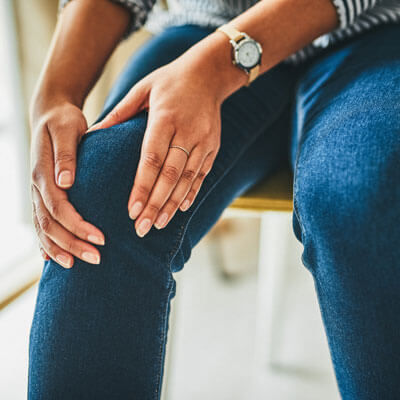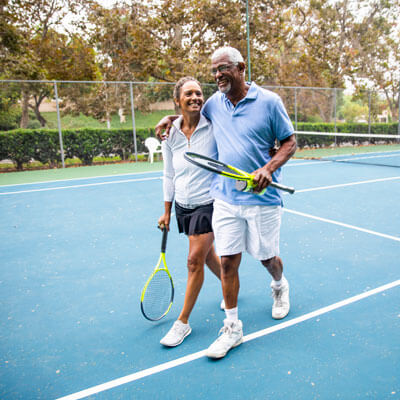Knee Pain
Whether you’re an athlete, senior, or manual laborer, you may experience knee pain, a common condition ranging from mildly annoying to downright debilitating. This type of discomfort can keep people of all ages and backgrounds from climbing stairs and fully engaging in everyday activities or their favorite hobbies.
So, what causes this type of discomfort?
The 5 Primary Causes
Ligament Injuries: These are sprains or tears of the ligaments, such as the anterior cruciate ligament (ACL) or medial collateral ligament (MCL), due to abrupt twisting or direct impact.
Meniscus Tears: These result from damage to the meniscus, the rubbery cartilage that cushions the knee joint, often due to sudden twisting or degenerative changes.
Osteoarthritis: This condition refers to the gradual breakdown of the protective cartilage in the knee joint, leading to joint discomfort, stiffness, and reduced range of motion.
Rheumatoid Arthritis: This autoimmune disorder causes inflammation, pain, and swelling in the knee joint.
Patellofemoral Pain Syndrome: This condition is characterized by discomfort around or under the kneecap, typically due to overuse or imbalance in the surrounding muscles.
Diagnosis and Treatment: What’s Involved
Before knee pain can be effectively managed, it must be properly diagnosed. Here’s what you can expect: our chiropractors may perform a comprehensive physical examination, review your medical history, and order diagnostic tests, including X-rays, MRI scans, or blood tests, to identify the underlying cause of your discomfort.
How we address your discomfort depends on its specific cause and severity. Here are some common approaches:
RICE Therapy: Rest, Ice, Compression, and Elevation can help reduce pain, swelling, and inflammation in the acute stage of injury.
Physiotherapy: Exercises and stretches focused on strengthening the muscles around the knee joint can improve stability, increase flexibility, and reduce discomfort.
Acupuncture: This form of Traditional Chinese medicine may help ease pain.
Laser Therapy: This modality bio-stimulates tissue repair, reducing treatment time and alleviating discomfort.
Shockwave Therapy: This type of treatment promotes and accelerates the recovery of injured tissue.
Assistive Devices: Using knee braces, crutches, or orthotic inserts can support and reduce pressure on the knee joint during activities.
Medications: NSAIDs, painkillers, and corticosteroid injections may be prescribed to relieve discomfort and reduce inflammation.
Surgical Intervention: In severe cases, when conservative treatments fail to provide relief, surgical procedures like arthroscopy, ligament repair, or joint replacement may be considered.
The Power of Prevention and Self-Care Measures
Fortunately, there are several things you can do to prevent or manage knee pain:
- Maintain a healthy weight to reduce stress on the knee joints.
- Wear appropriate footwear and employ proper techniques while engaging in physical activities or sports.
- Regularly engage in low-impact forms of exercises, such as swimming or cycling, to improve joint strength and increase flexibility.
- Avoid extended periods of standing or sitting and take breaks to get up, move around, and stretch.
- Use knee pads or kneeling cushions for activities that pressure the knees.
Ready for Relief?
If knee pain holds you back, we’re here to help at KIROMEDICA Health Centre. Contact KIROMEDICA Health Centre today to schedule an appointment at our North York or Scarborough location.
CONTACT US »

Knee Pain in North York, Scarborough ON | KIROMEDICA Health Centre



